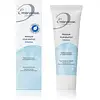What's inside
What's inside
 Key Ingredients
Key Ingredients

 Benefits
Benefits

 Concerns
Concerns

 Ingredients Side-by-side
Ingredients Side-by-side

Water
Skin ConditioningCaprylic/Capric Triglyceride
MaskingGlycerin
HumectantDiisopropyl Sebacate
EmollientCarbomer
Emulsion StabilisingHydroxyacetophenone
AntioxidantPropanediol
Solvent1,2-Hexanediol
Skin ConditioningCaprylyl Glycol
EmollientSodium Hydroxide
BufferingParfum
MaskingCitric Acid
BufferingSodium Hyaluronate
HumectantSodium Phytate
Hydrolyzed Algin
Nymphaea Alba Flower Extract
Skin ConditioningMaris Aqua
HumectantChlorella Vulgaris Extract
Skin ConditioningLimonene
PerfumingCI 42090
Cosmetic ColorantWater, Caprylic/Capric Triglyceride, Glycerin, Diisopropyl Sebacate, Carbomer, Hydroxyacetophenone, Propanediol, 1,2-Hexanediol, Caprylyl Glycol, Sodium Hydroxide, Parfum, Citric Acid, Sodium Hyaluronate, Sodium Phytate, Hydrolyzed Algin, Nymphaea Alba Flower Extract, Maris Aqua, Chlorella Vulgaris Extract, Limonene, CI 42090
Water
Skin ConditioningMandelic Acid
AntimicrobialGlycerin
HumectantLactobionic Acid
BufferingHydroxyethylcellulose
Emulsion StabilisingSodium Hydroxide
BufferingPropanediol
SolventPhenoxyethanol
PreservativeHydroxyacetophenone
AntioxidantMenthyl Ethylamido Oxalate
Skin ConditioningAlcohol Denat.
AntimicrobialXanthan Gum
EmulsifyingParfum
MaskingDisodium EDTA
Asiatic Acid
Skin ConditioningCopper PCA
HumectantPadina Pavonica Thallus Extract
Skin ConditioningChlorella Vulgaris Extract
Skin ConditioningAcacia Decurrens Flower Extract
MaskingRosa Centifolia Flower Extract
AstringentRhizobian Gum
Sodium Hyaluronate
HumectantChlorphenesin
AntimicrobialAlcohol
AntimicrobialWater, Mandelic Acid, Glycerin, Lactobionic Acid, Hydroxyethylcellulose, Sodium Hydroxide, Propanediol, Phenoxyethanol, Hydroxyacetophenone, Menthyl Ethylamido Oxalate, Alcohol Denat., Xanthan Gum, Parfum, Disodium EDTA, Asiatic Acid, Copper PCA, Padina Pavonica Thallus Extract, Chlorella Vulgaris Extract, Acacia Decurrens Flower Extract, Rosa Centifolia Flower Extract, Rhizobian Gum, Sodium Hyaluronate, Chlorphenesin, Alcohol
Ingredients Explained
These ingredients are found in both products.
Ingredients higher up in an ingredient list are typically present in a larger amount.
Chlorella Vulgaris Extract comes from a green microalga. It is hydrating and contains antioxidants.
Studies also show Chlorella Vulgaris may help in rebuilding collagen and elastin. This ingredient is made up of lipids, carbohydrates, and chlorophyll.
Fun fact: This ingredient is commonly used as food additive in Japan.
Learn more about Chlorella Vulgaris ExtractGlycerin is already naturally found in your skin. It helps moisturize and protect your skin.
A study from 2016 found glycerin to be more effective as a humectant than AHAs and hyaluronic acid.
As a humectant, it helps the skin stay hydrated by pulling moisture to your skin. The low molecular weight of glycerin allows it to pull moisture into the deeper layers of your skin.
Hydrated skin improves your skin barrier; Your skin barrier helps protect against irritants and bacteria.
Glycerin has also been found to have antimicrobial and antiviral properties. Due to these properties, glycerin is often used in wound and burn treatments.
In cosmetics, glycerin is usually derived from plants such as soybean or palm. However, it can also be sourced from animals, such as tallow or animal fat.
This ingredient is organic, colorless, odorless, and non-toxic.
Glycerin is the name for this ingredient in American English. British English uses Glycerol/Glycerine.
Learn more about GlycerinHydroxyacetophenone is antioxidant with skin conditioning and soothing properties. It also boosts the efficiency of preservatives.
This ingredient is not irritating or sensitizing.
Parfum is a catch-all term for an ingredient or more that is used to give a scent to products.
Also called "fragrance", this ingredient can be a blend of hundreds of chemicals or plant oils. This means every product with "fragrance" or "parfum" in the ingredients list is a different mixture.
For instance, Habanolide is a proprietary trade name for a specific aroma chemical. When used as a fragrance ingredient in cosmetics, most aroma chemicals fall under the broad labeling category of “FRAGRANCE” or “PARFUM” according to EU and US regulations.
The term 'parfum' or 'fragrance' is not regulated in many countries. In many cases, it is up to the brand to define this term.
For instance, many brands choose to label themselves as "fragrance-free" because they are not using synthetic fragrances. However, their products may still contain ingredients such as essential oils that are considered a fragrance by INCI standards.
One example is Calendula flower extract. Calendula is an essential oil that still imparts a scent or 'fragrance'.
Depending on the blend, the ingredients in the mixture can cause allergies and sensitivities on the skin. Some ingredients that are known EU allergens include linalool and citronellol.
Parfum can also be used to mask or cover an unpleasant scent.
The bottom line is: not all fragrances/parfum/ingredients are created equally. If you are worried about fragrances, we recommend taking a closer look at an ingredient. And of course, we always recommend speaking with a professional.
Learn more about ParfumPropanediol is an all-star ingredient. It softens, hydrates, and smooths the skin.
It’s often used to:
Propanediol is not likely to cause sensitivity and considered safe to use. It is derived from corn or petroleum with a clear color and no scent.
Learn more about PropanediolSodium Hyaluronate is hyaluronic acid's salt form. It is commonly derived from the sodium salt of hyaluronic acid.
Like hyaluronic acid, it is great at holding water and acts as a humectant. This makes it a great skin hydrating ingredient.
Sodium Hyaluronate is naturally occurring in our bodies and is mostly found in eye fluid and joints.
These are some other common types of Hyaluronic Acid:
Learn more about Sodium HyaluronateSodium Hydroxide is also known as lye or caustic soda. It is used to adjust the pH of products; many ingredients require a specific pH to be effective.
In small amounts, sodium hydroxide is considered safe to use. However, large amounts may cause chemical burns due to its high alkaline.
Your skin has a natural pH and acid mantle. This acid mantle helps prevent harmful bacteria from breaking through. The acid mantle also helps keep your skin hydrated.
"Alkaline" refers to a high pH level. A low pH level would be considered acidic.
Learn more about Sodium HydroxideWater. It's the most common cosmetic ingredient of all. You'll usually see it at the top of ingredient lists, meaning that it makes up the largest part of the product.
So why is it so popular? Water most often acts as a solvent - this means that it helps dissolve other ingredients into the formulation.
You'll also recognize water as that liquid we all need to stay alive. If you see this, drink a glass of water. Stay hydrated!
Learn more about Water